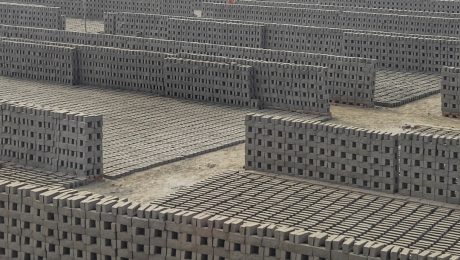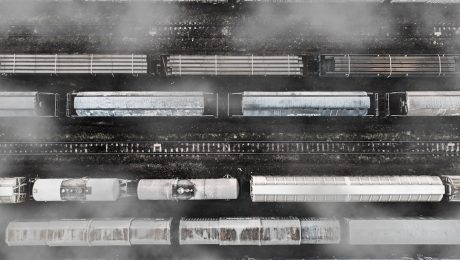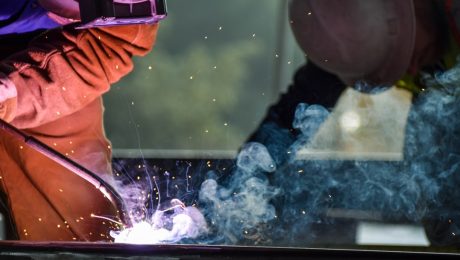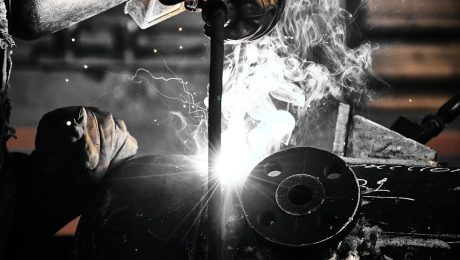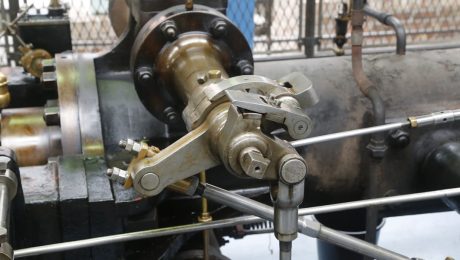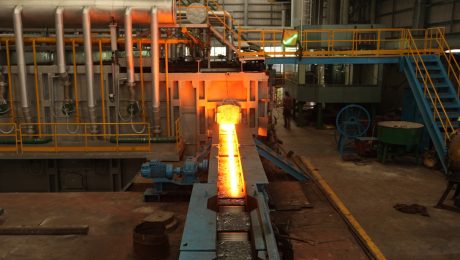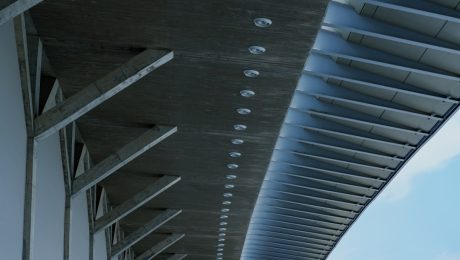GloballSteel stands as a leading name in the steel construction industry, renowned for its innovative designs, robust engineering, and commitment to quality. This blog post delves into a selection of GloballSteel’s reference projects, highlighting their diverse expertise and showcasing the company’s ability to deliver exceptional results across various sectors.
1. High-Rise Buildings: Reaching New Heights with GloballSteel
GloballSteel’s expertise extends to the construction of towering skyscrapers, demanding precision engineering and meticulous planning. One notable project is the “Skyline Tower” in [Fictional City Name], a 70-story residential building featuring a complex steel framework designed to withstand extreme weather conditions. The project involved the use of advanced steel alloys and innovative construction techniques to ensure both structural integrity and aesthetic appeal. GloballSteel’s engineers collaborated closely with architects to optimize the design for maximum efficiency and minimize environmental impact. The Skyline Tower stands as a testament to GloballSteel’s ability to handle large-scale, complex projects while maintaining the highest standards of quality and safety.
Another impressive high-rise project is the [Fictional Building Name] in [Fictional City Name], a mixed-use development incorporating residential, commercial, and retail spaces. This project showcased GloballSteel’s proficiency in integrating sustainable practices into high-rise construction, utilizing recycled steel and implementing energy-efficient design features. The successful completion of the [Fictional Building Name] further solidified GloballSteel’s reputation as a leader in sustainable high-rise construction.
2. Bridges and Infrastructure: Connecting Communities with Steel Solutions
GloballSteel’s contributions to infrastructure development are equally significant. The company has played a vital role in constructing numerous bridges, spanning from small pedestrian crossings to large-scale highway overpasses. One notable example is the [Fictional Bridge Name], a cable-stayed bridge spanning a wide river in [Fictional City Name]. This project required sophisticated engineering expertise to ensure the bridge’s stability and longevity, considering factors like seismic activity and water currents. GloballSteel’s engineers utilized advanced computer modeling and simulation techniques to optimize the bridge’s design and minimize material usage.
Furthermore, GloballSteel has been involved in various other infrastructure projects, including the construction of railway lines, tunnels, and industrial facilities. Their commitment to delivering durable and efficient infrastructure solutions has contributed significantly to the development of various communities.
3. Industrial and Manufacturing Facilities: Robust Structures for Diverse Needs
GloballSteel’s expertise extends beyond architectural marvels to encompass the construction of robust and functional industrial and manufacturing facilities. They have successfully completed projects for clients in various sectors, including automotive, aerospace, and energy. These projects often involve the construction of large, heavy-duty structures requiring specialized steel fabrication and erection techniques. GloballSteel’s experience in this area ensures that these facilities are built to withstand the demanding operational conditions of their respective industries.
For example, GloballSteel constructed a state-of-the-art manufacturing plant for [Fictional Company Name], a leading automotive parts supplier. This project involved the precise fabrication and assembly of a complex steel framework, ensuring the facility’s structural integrity and operational efficiency. The project highlights GloballSteel’s ability to handle projects with tight deadlines and stringent quality control requirements.
4. Sustainable Steel Construction: GloballSteel’s Commitment to the Environment
GloballSteel is committed to sustainable practices throughout its operations. The company actively incorporates eco-friendly materials and construction techniques into its projects, minimizing environmental impact. This includes utilizing recycled steel, optimizing material usage through advanced design techniques, and implementing energy-efficient construction methods. Several of GloballSteel’s projects have achieved LEED certification, demonstrating their commitment to building sustainable structures.
The company also invests in research and development to explore new sustainable steel construction technologies, ensuring that its projects remain at the forefront of environmental responsibility.
5. Innovation and Technological Advancements: Shaping the Future of Steel Construction
GloballSteel continuously invests in research and development to stay at the forefront of steel construction innovation. They utilize advanced technologies like Building Information Modeling (BIM) and digital fabrication techniques to enhance efficiency, accuracy, and sustainability. Their commitment to innovation ensures that their projects are not only structurally sound but also aesthetically pleasing and environmentally responsible. GloballSteel’s proactive approach to technology integration allows them to deliver projects ahead of schedule and within budget.
The adoption of these advanced technologies has resulted in significant improvements in project delivery times, cost efficiency, and overall quality. GloballSteel is committed to continuing its investment in research and development, pushing the boundaries of steel construction and shaping the future of the industry.
GloballSteel’s portfolio of reference projects showcases its unwavering dedication to quality, innovation, and sustainability. The company’s ability to successfully complete complex projects across diverse sectors solidifies its position as a leader in the steel construction industry.
Tags: GloballSteel, Steel Construction, Reference Projects, High-Rise Buildings, Infrastructure Projects, Sustainable Steel, Steel Fabrication
In today’s globalized economy, efficient logistics are the lifeblood of successful businesses. The intricate interplay between maritime and land transportation forms the backbone of most supply chains, demanding a sophisticated strategy to ensure timely and cost-effective delivery of goods. This comprehensive guide delves into key strategies for optimizing your maritime and land logistics, helping you navigate the complexities and achieve seamless global trade.
1. Optimizing Maritime Transportation: Charting a Course for Efficiency
Maritime transport, while cost-effective for large volumes, presents unique challenges. Optimizing this leg of your supply chain requires careful consideration of several factors. Choosing the right vessel type – from container ships to bulk carriers – is crucial, depending on the nature and volume of your cargo. Careful route planning, considering factors like weather patterns, port congestion, and canal availability, is essential for minimizing transit times and potential delays. Furthermore, leveraging technology like advanced vessel tracking systems and predictive analytics can provide real-time visibility into your cargo’s journey, enabling proactive intervention in case of unforeseen circumstances. Negotiating favorable freight rates with reliable shipping lines is also paramount to controlling costs. Finally, understanding and complying with international maritime regulations and documentation processes is crucial for avoiding costly delays and penalties.
2. Integrating Land Transportation: The Final Mile and Beyond
The seamless transition from maritime to land transportation is critical. Efficient land logistics involves selecting the optimal mode of transport – trucking, rail, or a combination – based on factors like distance, delivery time requirements, and cargo characteristics. For example, trucking offers flexibility for door-to-door delivery, while rail is more cost-effective for long distances and high volumes. Effective last-mile delivery strategies are also crucial, particularly for e-commerce businesses. This might involve utilizing specialized delivery services, optimizing delivery routes with route planning software, and implementing efficient warehouse management systems. Careful consideration of customs clearance procedures and documentation requirements is also essential for avoiding delays at border crossings.
3. Technology’s Role in Integrated Logistics Management
Technology plays a transformative role in modern logistics. Transportation Management Systems (TMS) integrate various aspects of the supply chain, providing real-time visibility into cargo location, transit times, and potential disruptions. This allows for proactive problem-solving and optimized decision-making. Furthermore, the use of blockchain technology offers enhanced security and transparency in tracking goods throughout the supply chain, reducing the risk of fraud and improving traceability. Data analytics provides valuable insights into historical performance, allowing businesses to identify areas for improvement and optimize their logistics strategies. Investing in appropriate technology is crucial for gaining a competitive edge in today’s dynamic global market.
4. Risk Management and Contingency Planning: Navigating Uncertainties
The global supply chain is susceptible to various risks, including geopolitical instability, natural disasters, port congestion, and unforeseen delays. Effective risk management involves identifying potential threats, assessing their likelihood and impact, and developing mitigation strategies. This might include diversifying transportation routes, utilizing alternative modes of transport, and establishing robust contingency plans to address potential disruptions. Insurance is also a vital component of risk management, protecting against financial losses due to unforeseen circumstances. Regularly reviewing and updating your risk management strategy is crucial to adapt to the ever-changing global landscape.
5. Collaboration and Communication: Building a Strong Supply Chain Ecosystem
Effective logistics management requires strong collaboration and communication among all stakeholders involved in the supply chain, including shippers, carriers, freight forwarders, customs brokers, and warehouse operators. Open communication channels, utilizing tools like collaborative platforms and real-time tracking systems, are essential for maintaining transparency and ensuring efficient information flow. Building strong relationships with reliable partners is also crucial for navigating challenges and ensuring seamless operations. Regular performance reviews and feedback mechanisms help identify areas for improvement and strengthen the overall supply chain ecosystem.
By implementing these strategies, businesses can optimize their maritime and land logistics, achieving cost-effectiveness, efficiency, and improved customer satisfaction. The key lies in a holistic approach that integrates technology, risk management, and collaborative partnerships to create a truly seamless supply chain.
SEO Tags: Maritime Logistics, Land Logistics, Supply Chain Management, Global Logistics, Transportation Management
Understanding Equal Angle Bars: Definition and Properties
Equal angle bars, often simply called “angles,” are L-shaped structural components with two legs of equal length. These legs are typically joined at a 90-degree angle, although other angles are possible, but less common in standard applications. Made from various materials, most commonly mild steel, they are known for their strength-to-weight ratio and versatility. Their properties depend heavily on the material used and their dimensions. Key properties include:
- Tensile Strength: The ability to resist pulling forces.
- Yield Strength: The stress at which the material begins to deform permanently.
- Compressive Strength: The ability to resist crushing forces.
- Shear Strength: The ability to resist forces that cause slippage along parallel planes.
- Ductility: The ability to deform plastically before fracturing.
- Hardness: Resistance to indentation or scratching.
Understanding these properties is crucial when selecting the appropriate angle bar for a specific application.
Diverse Applications of Equal Angle Bars in Construction
Equal angle bars find widespread use in various construction projects, both large and small. Their strength and versatility make them ideal for a multitude of applications:
- Structural Support: Used as bracing elements in buildings, bridges, and other structures. They provide lateral support to beams, columns, and walls, enhancing stability and preventing collapse.
- Framing: Used in the construction of frameworks for buildings, sheds, and other structures. They can be welded or bolted together to create strong and rigid frames.
- Reinforcement: Used to reinforce existing structures or to strengthen weak points. They can be welded or bolted to existing members to increase their load-bearing capacity.
- Guardrails and Fencing: Used in the construction of guardrails, fences, and other barriers. Their strength and durability make them suitable for applications where safety is paramount.
- Machinery and Equipment: Used in the construction of machinery and equipment, providing support and structural integrity to various components.
The specific size and material of the angle bar will depend on the application and the load it needs to support.
Manufacturing Processes and Material Selection
Equal angle bars are typically manufactured through hot rolling or cold rolling processes. Hot rolling involves passing heated steel through a series of rollers to shape it, resulting in a stronger, but less accurate, product. Cold rolling produces more precise dimensions and better surface finish but with slightly reduced strength. The choice of manufacturing process depends on the desired properties and tolerances.
Material selection is crucial. While mild steel is the most common material, other options exist, each with its own advantages and disadvantages:
- Mild Steel: Cost-effective, readily available, and offers a good balance of strength and ductility.
- Stainless Steel: Offers superior corrosion resistance, making it ideal for outdoor or harsh environments. However, it is more expensive than mild steel.
- Aluminum: Lighter than steel, offering good corrosion resistance and high strength-to-weight ratio, but less strong than steel.
The selection of the material depends on the specific application requirements, budget, and environmental conditions.
Advantages and Disadvantages of Using Equal Angle Bars
Equal angle bars offer several advantages, contributing to their widespread use:
- High Strength-to-Weight Ratio: They are relatively strong for their weight, making them efficient for structural applications.
- Versatility: They can be used in a wide range of applications and can be easily welded, bolted, or riveted.
- Cost-Effectiveness: Generally less expensive than other structural shapes like I-beams or channels, especially mild steel angles.
- Easy Fabrication: They are relatively easy to cut, drill, and weld, making them suitable for both large-scale and small-scale projects.
However, some disadvantages should also be considered:
- Potential for Bending: They can be susceptible to bending under heavy loads, especially if not properly supported.
- Limited Load-Bearing Capacity Compared to Other Sections: While strong, they might not be suitable for extremely heavy loads in comparison to I-beams or H-sections.
- Corrosion Susceptibility (Mild Steel): Mild steel angles are prone to rust and corrosion, requiring protective coatings in certain environments.
Careful consideration of these factors is essential for successful project implementation.
Selecting the Right Equal Angle Bar for Your Project
Choosing the correct equal angle bar requires careful consideration of several factors:
- Size and Dimensions: The dimensions of the angle bar should be chosen based on the load it needs to support and the application requirements. Larger angles provide greater strength and stiffness.
- Material: The material should be selected based on the application’s environmental conditions and required properties (strength, corrosion resistance, etc.).
- Surface Finish: The surface finish can affect the appearance and the ease of welding or painting. Hot-rolled angles have a rougher finish, while cold-rolled angles have a smoother finish.
- Load Calculations: Accurate load calculations are crucial to ensure that the selected angle bar can safely support the intended load. This often requires engineering expertise.
- Budget Constraints: Cost is a significant factor, particularly for large projects. Balancing cost with performance requirements is essential.
Consulting with a structural engineer is highly recommended for critical applications to ensure the appropriate selection and safe implementation of equal angle bars.
Disclaimer: This information is for general guidance only. Always consult with a qualified professional for specific engineering advice and load calculations.
Tags: equal angle bars, angle iron, steel angles, structural steel, construction materials
body {
font-family: sans-serif;
line-height: 1.6;
}
h1, h2, h3 {
color: #333;
}
h1 {
font-size: 2.5em;
}
h2 {
font-size: 2em;
}
h3 {
font-size: 1.5em;
}
The European Union’s CE marking is not just a logo; it’s a passport to the vast European market for steel products. This comprehensive guide will unravel the intricacies of CE certification for steel, ensuring your products meet the stringent requirements and gain access to this lucrative market.
Understanding the CE Marking for Steel Products
The CE marking, short for “Conformité Européenne,” signifies that a product conforms to all applicable EU directives and regulations. For steel, this means demonstrating compliance with various directives, primarily those related to safety, health, and environmental protection. It’s not a quality mark in itself, but a confirmation of adherence to essential safety requirements. Obtaining CE marking is mandatory for many steel products before they can be legally sold within the European Economic Area (EEA).
Key Directives Relevant to Steel CE Certification
Several directives impact steel products, depending on their intended use. These include:
- Construction Products Regulation (CPR): This is crucial for steel used in construction, encompassing structural steel, reinforcement bars, and other components. It mandates the use of harmonized European standards (EN standards) and requires manufacturers to declare the performance characteristics of their products through a Declaration of Performance (DoP).
- Machinery Directive: Relevant for steel components used in machinery, this directive focuses on the safety of the machinery itself. Steel parts must contribute to the overall safety of the machine.
- Pressure Equipment Directive (PED): Applies to steel used in pressure vessels and pipelines, demanding rigorous testing and certification to ensure they can withstand pressure safely.
- Low Voltage Directive (LVD): Concerns steel components in electrical equipment, focusing on safety aspects related to electrical hazards.
- Electromagnetic Compatibility (EMC) Directive: Applies to steel products that may emit or be susceptible to electromagnetic interference, requiring measures to ensure compatibility with other equipment.
The specific directives applicable depend entirely on the final use of the steel product. It is crucial to correctly identify the relevant directives to ensure full compliance.
The CE Certification Process: A Step-by-Step Guide
The CE certification process generally involves these steps:
- Identify Applicable Directives and Standards: Determine which EU directives and harmonized EN standards apply to your steel product.
- Design and Manufacturing: Ensure your design and manufacturing processes comply with the identified standards. This often involves rigorous quality control procedures.
- Testing and Verification: Conduct necessary testing to verify that your product meets the essential requirements. This might involve material testing, mechanical testing, and other relevant assessments. Notified Bodies (NBs) often play a crucial role in this stage.
- Declaration of Conformity (DoC): Prepare a DoC, a formal declaration stating that your product conforms to the relevant directives and standards. This is a crucial legal document.
- CE Marking: Affix the CE marking to the product, accompanied by the manufacturer’s identification and other required information.
- Technical File: Maintain a detailed technical file documenting the entire certification process, including test results, design specifications, and other relevant information. This file should be readily available for inspection by authorities.
Role of Notified Bodies (NBs) in Steel CE Certification
Notified Bodies are independent organizations designated by EU member states to assess the conformity of products to relevant directives. For complex steel products or those requiring stringent safety assessments, the involvement of an NB is often mandatory. NBs conduct audits, inspections, and testing to verify compliance. Their involvement adds credibility and assurance to the CE marking.
Choosing a reputable NB is critical. Their expertise and impartiality ensure a thorough assessment and minimize the risk of non-compliance.
Benefits of CE Certification for Steel Products
Obtaining CE certification offers numerous advantages:
- Access to the European Market: The most significant benefit is the ability to legally sell your steel products within the EEA.
- Enhanced Credibility and Trust: The CE marking builds consumer confidence and demonstrates your commitment to safety and quality.
- Competitive Advantage: CE certification gives you a competitive edge over manufacturers who haven’t obtained it.
- Reduced Legal Risks: Compliance with EU regulations minimizes the risk of legal penalties and product recalls.
- Improved Brand Reputation: CE certification enhances your brand’s image and reputation for quality and safety.
Navigating the CE certification process for steel products can be complex, but understanding the requirements and engaging with qualified professionals can ensure a smooth and successful journey. Remember to consult the relevant directives and standards for your specific product and seek expert advice when needed.
Tags: CE marking, steel certification, EU regulations, construction products regulation, notified bodies
body {
font-family: sans-serif;
line-height: 1.6;
}
h1, h2, h3 {
color: #333;
}
h1 {
font-size: 2.5em;
}
h2 {
font-size: 2em;
}
h3 {
font-size: 1.5em;
}
The steel industry is a cornerstone of global infrastructure, demanding highly skilled professionals. To stand out in this competitive field and demonstrate your expertise, obtaining relevant certifications is crucial. This comprehensive guide will navigate you through the world of steel industry certifications, helping you understand their value, application processes, and the impact they can have on your career.
Understanding the Value of Steel Industry Certifications
Steel industry certifications are more than just pieces of paper; they represent a commitment to excellence and a demonstrable level of knowledge and skill. These certifications validate your expertise to potential employers, clients, and colleagues, showcasing your proficiency in specific areas of the industry. They can lead to increased earning potential, improved career prospects, and enhanced credibility within the field. Furthermore, certifications often demonstrate a commitment to safety and quality, which are paramount in the steel industry. Different certifications cater to various specializations, allowing individuals to tailor their professional development to their specific career goals.
Types of Steel Industry Certifications: A Detailed Overview
The range of certifications available within the steel industry is broad, varying depending on the specific area of expertise. Some common categories include:
- Welding Certifications: These are crucial for professionals involved in joining steel components. Certifications like the American Welding Society (AWS) certifications are widely recognized and highly valued. Different levels of certification exist, indicating varying degrees of skill and proficiency in different welding processes (e.g., MIG, TIG, SMAW).
- Metallurgical Engineering Certifications: For professionals focused on the properties and processing of steel, metallurgical engineering certifications are essential. These certifications often require advanced education and experience, demonstrating a deep understanding of steel’s chemical composition and its impact on its mechanical properties.
- Quality Control and Assurance Certifications: Ensuring the quality of steel products is paramount. Certifications in quality control and assurance, such as ISO 9001 related certifications, are highly sought after by companies committed to producing high-quality steel. These certifications demonstrate expertise in implementing and maintaining quality management systems.
- Safety Certifications: Safety is a critical aspect of the steel industry. Certifications in occupational safety and health (OSH) demonstrate a commitment to workplace safety and the ability to identify and mitigate potential hazards. These certifications are often mandatory for certain roles and significantly enhance employability.
- Management and Leadership Certifications: For those aspiring to leadership positions, certifications in project management, operations management, or leadership development can significantly enhance their career prospects. These certifications demonstrate the skills necessary to effectively manage teams, projects, and resources within the steel industry.
The Application Process: Navigating the Requirements
The application process for steel industry certifications varies depending on the specific certification and issuing body. Generally, it involves several steps:
- Researching and Selecting a Certification: Identify the certification that aligns with your career goals and expertise.
- Meeting Eligibility Requirements: Most certifications have specific eligibility criteria, including education, experience, and potentially prior certifications.
- Submitting an Application: Complete the application form and submit it to the relevant certifying body.
- Taking Examinations or Assessments: Many certifications require passing written or practical examinations to demonstrate competency.
- Meeting Continuing Education Requirements: Some certifications require ongoing professional development to maintain certification status.
It is crucial to thoroughly review the specific requirements for each certification before beginning the application process.
Maintaining Your Certification: Continuing Education and Renewal
Many steel industry certifications require ongoing professional development to maintain their validity. This typically involves completing continuing education units (CEUs) or participating in professional development activities. These requirements ensure that certified professionals remain up-to-date with the latest industry standards, technologies, and best practices. Failing to meet these requirements can result in the loss of certification.
Benefits Beyond the Certification: Networking and Professional Growth
Obtaining a steel industry certification offers numerous benefits beyond the certification itself. The process of obtaining a certification often involves networking with other professionals in the field, expanding your professional network and creating opportunities for collaboration and knowledge sharing. Furthermore, the commitment to continuous learning and professional development inherent in maintaining a certification fosters personal and professional growth, enhancing your overall career trajectory.
By understanding the value, types, application process, and maintenance requirements of steel industry certifications, you can significantly enhance your career prospects and contribute to the success of the industry. Remember to research thoroughly and choose certifications that align with your specific goals and expertise.
Tags: Steel Industry Certification, Welding Certification, Metallurgical Certification, Quality Control Certification, Safety Certification, Steel Industry Jobs
The humble square. A four-sided polygon, seemingly simple and unassuming. Yet, this geometric marvel has captivated mathematicians, artists, architects, and designers for millennia. From its precise angles to its symmetrical beauty, the square holds a significance that extends far beyond its basic definition. This post delves deep into the world of the square, exploring its various facets and uncovering its hidden depths.
The Defining Geometry of a Square
At its core, a square is defined by its properties: four equal sides and four right angles (90-degree angles). This seemingly simple definition underpins a wealth of mathematical relationships. The equal sides allow for easy calculation of its perimeter (the total distance around the shape), simply by multiplying the length of one side by four. Similarly, the area (the space enclosed within the shape) is calculated by squaring the length of one side (side * side). This straightforward calculation is a cornerstone of many mathematical formulas and applications.
The right angles are equally crucial. They ensure the square’s perfect symmetry and its ability to tessellate – to fit together seamlessly without gaps or overlaps. This property has been exploited extensively in architecture and design, allowing for the creation of intricate and aesthetically pleasing patterns.
Squares in History and Culture
The square’s influence extends far beyond the realm of mathematics. Throughout history, it has held symbolic meaning across diverse cultures. In ancient Egypt, the square was associated with stability and order, often incorporated into architectural designs and religious iconography. The square’s symmetry resonated with beliefs about cosmic balance and harmony. Similarly, many cultures have seen the square as a representation of the earth or the four cardinal directions.
In art and architecture, the square’s inherent stability and balance have made it a favorite for centuries. From the perfectly proportioned squares of Renaissance paintings to the imposing square city blocks of modern urban planning, its presence is undeniable. The square often provides a foundation for more complex designs, offering a sense of order and structure.
Practical Applications of Squares
The square’s practical applications are vast and varied. Its simple geometry makes it ideal for numerous engineering and construction projects. From the building blocks of structures to the design of microchips, the square’s predictable properties are invaluable. The ease of calculation related to its area and perimeter simplifies design processes and material estimations.
In everyday life, we encounter squares constantly. Think of tiles, windows, playing cards, and even the pixels on your computer screen – all based on the fundamental square shape. This ubiquitous presence highlights the square’s fundamental role in our built and digital environments.
Squares and Other Geometric Shapes
The square is intimately related to other geometric shapes. It’s a special case of a rectangle (a quadrilateral with four right angles), a rhombus (a quadrilateral with four equal sides), and a parallelogram (a quadrilateral with opposite sides parallel). Understanding these relationships allows for a deeper appreciation of the square’s position within the broader landscape of geometry.
Furthermore, the square’s diagonals bisect each other at right angles, creating four congruent right-angled isosceles triangles. This relationship is fundamental to many geometric proofs and constructions. The square’s connection to circles is also significant; a square can be inscribed within a circle, and a circle can be inscribed within a square.
The Square in Modern Design and Technology
The square’s influence continues to be felt in modern design and technology. In graphic design, the square provides a strong, visually appealing element, often used to create balanced and structured layouts. Its clean lines and symmetrical nature lend themselves well to minimalist aesthetics.
In digital technology, the square forms the basis of pixel grids and screen resolutions. The square’s simplicity and ease of manipulation make it a fundamental building block of digital images and interfaces. The concept of “square pixels” is integral to understanding image resolution and digital display technology.
From the micro-level of pixel grids to the macro-level of architectural designs, the square’s enduring relevance underscores its fundamental importance in shaping our world.
Tags: square, geometry, mathematics, shapes, area, perimeter
GloballSteel stands as a prominent player in the global steel industry, renowned for its commitment to quality, innovation, and sustainability. This comprehensive overview delves into the diverse range of products offered by GloballSteel, exploring their applications, manufacturing processes, and the company’s dedication to meeting the evolving needs of its customers worldwide.
A Diverse Range of Steel Grades: Catering to Varied Applications
GloballSteel boasts a vast portfolio of steel grades, meticulously engineered to meet the specific requirements of diverse industries. From high-strength low-alloy (HSLA) steels for demanding construction projects to stainless steels renowned for their corrosion resistance, the company offers a tailored solution for every application. Their product line includes:
- Carbon Steels: Used extensively in construction, automotive, and manufacturing due to their strength, weldability, and cost-effectiveness. GloballSteel offers a wide range of carbon steel grades, varying in tensile strength and other mechanical properties.
- Alloy Steels: These steels contain alloying elements like chromium, nickel, and molybdenum, enhancing properties such as strength, toughness, and corrosion resistance. They find applications in high-performance components and specialized machinery.
- Stainless Steels: Known for their exceptional corrosion resistance, stainless steels are ideal for applications in harsh environments, including chemical processing, food processing, and architectural design. GloballSteel offers various grades, including austenitic, ferritic, and martensitic stainless steels.
- High-Strength Low-Alloy (HSLA) Steels: These steels provide a superior strength-to-weight ratio, making them ideal for applications where weight reduction and structural integrity are critical, such as automotive components and bridges.
- Tool Steels: Engineered for their exceptional hardness, wear resistance, and toughness, tool steels are essential for manufacturing tools and dies used in various industries.
State-of-the-Art Manufacturing Processes: Ensuring Uncompromising Quality
GloballSteel’s commitment to quality is reflected in its advanced manufacturing processes. The company employs cutting-edge technologies throughout its production chain, ensuring consistent quality and adherence to stringent industry standards. Key processes include:
- Electric Arc Furnace (EAF) Steelmaking: EAF technology allows for efficient and environmentally friendly steel production, minimizing energy consumption and reducing carbon emissions.
- Continuous Casting: This process ensures consistent product quality and high production efficiency, producing semi-finished steel products with precise dimensions.
- Hot Rolling and Cold Rolling: These processes shape the steel into desired dimensions and enhance its mechanical properties, ensuring the final product meets the specified requirements.
- Advanced Heat Treatment: GloballSteel employs advanced heat treatment techniques to optimize the mechanical properties of the steel, achieving the desired strength, hardness, and toughness.
- Rigorous Quality Control: Throughout the entire manufacturing process, rigorous quality control measures are implemented to ensure that the final product meets the highest standards of quality and performance.
Diverse Applications Across Industries: Meeting Global Demands
GloballSteel’s steel products are used in a wide variety of industries, playing a vital role in infrastructure development, manufacturing, and technological advancements. Key application areas include:
- Construction: GloballSteel supplies steel for various construction projects, including high-rise buildings, bridges, and infrastructure development.
- Automotive: The company’s high-strength low-alloy (HSLA) steels are integral to the automotive industry, contributing to lighter and more fuel-efficient vehicles.
- Manufacturing: GloballSteel’s diverse range of steel grades supports various manufacturing processes, providing the necessary materials for machinery, tools, and components.
- Energy: The company’s steel products are used in the energy sector for pipelines, wind turbine towers, and other energy infrastructure projects.
- Consumer Goods: GloballSteel’s steels find their way into a wide range of consumer goods, from appliances to packaging materials.
Commitment to Sustainability: A Greener Future for Steel Production
GloballSteel is committed to environmentally responsible practices, striving to minimize its environmental impact throughout its operations. The company actively pursues sustainability initiatives, including:
- Reducing Carbon Emissions: GloballSteel invests in technologies and processes that reduce carbon emissions during steel production.
- Waste Reduction and Recycling: The company implements effective waste management strategies and promotes the recycling of steel scrap.
- Energy Efficiency: GloballSteel continually seeks ways to improve energy efficiency throughout its operations.
- Water Conservation: The company implements water conservation measures to minimize its water footprint.
- Compliance with Environmental Regulations: GloballSteel is committed to complying with all relevant environmental regulations and standards.
Global Reach and Customer Support: Delivering Excellence Worldwide
GloballSteel operates on a global scale, providing its high-quality steel products and exceptional customer support to clients worldwide. The company’s extensive distribution network ensures timely delivery and efficient logistics. GloballSteel’s commitment to customer satisfaction is reflected in its responsive customer service and technical support, ensuring clients receive the assistance they need to successfully implement their projects.
GloballSteel’s commitment to quality, innovation, and sustainability positions it as a leading provider of steel products globally. The company’s diverse portfolio, advanced manufacturing processes, and dedication to customer satisfaction make it a trusted partner for businesses across a wide range of industries.
SEO Tags: GloballSteel, Steel Products, Steel Portfolio, Steel Manufacturing, Steel Applications
Boiler tubes are the unsung heroes of power generation and industrial processes. These seemingly simple components play a crucial role in transferring heat efficiently, driving turbines, and powering countless industries. This comprehensive guide delves into the fascinating world of boiler tube technology, exploring the materials, manufacturing processes, applications, maintenance, and failure analysis that make them indispensable.
1. Materials Science: Choosing the Right Boiler Tube Material
The selection of boiler tube material is paramount, as it directly impacts the efficiency, lifespan, and safety of the boiler system. The choice depends on several factors, including operating pressure, temperature, the type of fuel used, and the corrosive environment. Common materials include:
- Carbon Steel: A cost-effective option for lower pressure and temperature applications. However, its susceptibility to corrosion limits its use in harsh environments.
- Alloy Steel: Offers enhanced strength, creep resistance, and corrosion resistance compared to carbon steel. Various alloying elements (chromium, molybdenum, vanadium) are added to tailor properties for specific operating conditions.
- Stainless Steel: Excellent corrosion resistance, making it suitable for applications involving aggressive chemicals or high-purity water. Different grades (e.g., 304, 316, 321) offer varying levels of performance.
- Non-Ferrous Metals: Materials like copper alloys (e.g., copper-nickel) and titanium are used in specialized applications requiring exceptional corrosion resistance or high thermal conductivity.
Careful material selection is crucial to prevent premature failure and ensure the long-term reliability of the boiler system.
2. Manufacturing Processes: From Raw Material to Finished Product
The manufacturing process for boiler tubes is a precise and sophisticated undertaking. It typically involves several key steps:
- Raw Material Preparation: Starting with carefully selected raw materials, the process begins with rigorous quality control checks to ensure consistency and purity.
- Tube Forming: Various techniques are employed, including seamless rolling, electric resistance welding (ERW), and extrusion, to create the desired tube dimensions and wall thickness.
- Heat Treatment: Heat treatment processes, such as annealing and tempering, are essential to refine the microstructure of the tube material, enhancing its mechanical properties like strength and ductility.
- Surface Finishing: Processes like polishing, pickling, and coating may be employed to improve corrosion resistance and reduce friction.
- Non-Destructive Testing (NDT): Rigorous NDT methods, such as ultrasonic testing and eddy current testing, are implemented to identify any flaws or defects before the tubes are used in the boiler.
The precision and quality control at each stage are paramount to ensure the integrity and reliability of the finished product.
3. Applications Across Industries: Where Boiler Tubes Shine
Boiler tubes find widespread applications across various industries, including:
- Power Generation: In power plants, boiler tubes form the heart of steam generators, facilitating the transfer of heat from combustion to water, generating high-pressure steam to drive turbines.
- Industrial Processes: Numerous industrial processes rely on boilers for heating, such as chemical processing, oil refining, and food processing. Boiler tubes are vital for efficient heat transfer in these applications.
- Heating and Cooling Systems: Boiler tubes are also used in smaller-scale heating and cooling systems, providing efficient heat transfer in buildings and other structures.
- Heat Exchangers: Beyond boilers, boiler tubes are extensively used in heat exchangers, transferring heat between different fluids in various industrial processes.
The versatility and efficiency of boiler tubes make them indispensable across a wide range of applications.
4. Maintenance and Inspection: Ensuring Long-Term Performance
Regular maintenance and inspection are crucial for extending the lifespan and ensuring the safe operation of boiler tubes. This includes:
- Visual Inspection: Regular visual inspections help identify any signs of corrosion, erosion, or damage.
- Non-Destructive Testing (NDT): Periodic NDT is crucial for detecting internal flaws and assessing the remaining tube wall thickness.
- Chemical Cleaning: Chemical cleaning helps remove deposits and scale buildup that can reduce efficiency and promote corrosion.
- Water Treatment: Proper water treatment is essential to minimize corrosion and scaling within the boiler system.
A proactive maintenance program is essential to prevent unexpected failures and ensure the continued safe and efficient operation of the boiler system.
5. Failure Analysis: Understanding and Preventing Tube Failures
Boiler tube failures can have significant consequences, ranging from reduced efficiency to catastrophic events. Understanding the causes of failure is crucial for prevention. Common failure mechanisms include:
- Corrosion: Various forms of corrosion, including pitting, crevice corrosion, and stress corrosion cracking, can weaken and ultimately lead to tube failure.
- Erosion: High-velocity fluid flow can erode the tube material, particularly at bends and constrictions.
- Creep: Prolonged exposure to high temperatures and stresses can cause creep, leading to gradual deformation and eventual failure.
- Fatigue: Repeated cyclic loading can lead to fatigue cracking, particularly in areas with stress concentrations.
- Overheating: Insufficient water flow or other operational issues can lead to overheating, causing rapid degradation and failure.
Thorough failure analysis, often involving metallurgical examination, is critical to identifying the root cause and implementing corrective actions to prevent future failures.
In conclusion, boiler tubes are critical components in numerous industrial applications. Understanding their technology, from material selection and manufacturing to maintenance and failure analysis, is essential for ensuring safe, efficient, and reliable operation.
Power plants, the behemoths of energy generation, rely on robust and reliable infrastructure. While the turbines and generators often steal the spotlight, the underlying structural integrity, largely determined by the use of steel profiles, is equally critical. This post delves into the multifaceted role of steel profiles in power plant construction and operation, exploring their diverse applications, material selection, manufacturing, and the paramount importance of quality control.
1. The Diverse Applications of Steel Profiles in Power Plant Construction
Steel profiles, encompassing a wide range of shapes like I-beams, H-beams, channels, angles, and hollow sections, are indispensable in numerous aspects of power plant construction. Their versatility allows for the creation of complex structures with high load-bearing capacity and dimensional accuracy. Specific applications include:
- Building Frames: Steel profiles form the skeletal structure of power plant buildings, supporting roofs, walls, and internal floors. Their high strength-to-weight ratio minimizes material usage while ensuring structural stability.
- Support Structures for Equipment: Heavy machinery like turbines, generators, and boilers require robust support structures. Steel profiles are crucial in designing and building these frameworks, ensuring precise alignment and vibration dampening.
- Cooling Towers: The iconic cooling towers of many power plants are often constructed using steel profiles, which provide the necessary strength and resistance to environmental factors like wind and temperature fluctuations.
- Piping Supports: The extensive network of pipes carrying steam, water, and other fluids necessitates a complex system of supports. Steel profiles are used to create these supports, ensuring the integrity and safety of the piping system.
- Transmission Towers: For power plants relying on high-voltage transmission lines, steel profiles are essential in constructing the sturdy and resilient towers that support the cables.
2. Material Selection: Choosing the Right Steel for Power Plant Applications
The choice of steel profile material is crucial, dictated by the specific application and environmental conditions. Factors considered include:
- Strength and Yield Strength: Power plant structures must withstand significant loads and stresses. High-strength steel profiles are often preferred to ensure structural integrity and safety.
- Corrosion Resistance: Power plants operate in environments that can be corrosive, particularly near coastal areas or those with high humidity. Steel profiles with corrosion-resistant coatings, such as galvanization or specialized paint systems, are often necessary.
- Temperature Resistance: Some areas within a power plant experience high temperatures. In such cases, heat-resistant steel alloys are selected to prevent weakening or structural failure.
- Weldability: Steel profiles often need to be welded together during construction. The chosen material must possess good weldability to ensure strong and reliable joints.
- Fatigue Resistance: Many components experience cyclic loading and unloading. Selecting steel with high fatigue resistance is vital to prevent premature failure.
3. Manufacturing Processes and Quality Control
The manufacturing process for steel profiles used in power plants is rigorous, demanding precision and adherence to strict quality standards. Processes include:
- Hot Rolling: This process shapes steel billets into the desired profiles at high temperatures, achieving the required strength and dimensional accuracy.
- Cold Forming: Further shaping and refinement can be achieved through cold forming, improving dimensional precision and surface finish.
- Welding: Various welding techniques, including arc welding and resistance welding, are used to join steel profiles during fabrication.
- Surface Treatment: Coatings such as galvanization or paint are applied to protect the steel profiles from corrosion.
- Quality Control Inspections: Rigorous quality control measures, including dimensional checks, material testing, and non-destructive testing (NDT), are implemented throughout the manufacturing process to ensure compliance with industry standards and specifications.
4. The Importance of Structural Integrity and Safety
The structural integrity of steel profiles in power plants is paramount for safe and reliable operation. Failure of even a single component can have catastrophic consequences, leading to equipment damage, production downtime, and potential safety hazards. Regular inspection and maintenance programs are crucial to identify and address any potential issues early on. These programs often include:
- Visual Inspections: Regular visual checks to identify signs of corrosion, damage, or deformation.
- Non-Destructive Testing (NDT): Techniques like ultrasonic testing and magnetic particle inspection are used to detect internal flaws without damaging the structure.
- Load Testing: Periodic load testing ensures that the steel structures can withstand the intended loads.
- Structural Analysis: Regular structural analysis helps to assess the overall integrity of the steel structures and identify potential weaknesses.
5. Future Trends and Innovations in Steel Profile Applications
The industry is constantly evolving, with ongoing research and development focused on improving the performance and sustainability of steel profiles. Future trends include:
- High-Strength Steels: The development of even stronger and lighter steel alloys will allow for more efficient and cost-effective designs.
- Advanced Coatings: New coatings with enhanced corrosion resistance and durability will extend the lifespan of steel profiles.
- Sustainable Manufacturing Practices: The industry is increasingly focused on reducing the environmental impact of steel production and promoting the use of recycled steel.
- Digitalization and BIM: Building Information Modeling (BIM) is playing an increasingly important role in the design and construction of power plants, improving efficiency and collaboration.
- Smart Sensors and Monitoring: The integration of smart sensors into steel structures allows for real-time monitoring of structural health, enabling proactive maintenance and preventing potential failures.
In conclusion, steel profiles are the unsung heroes of power plant construction, providing the essential structural backbone for these vital energy facilities. Their diverse applications, coupled with rigorous quality control and ongoing innovation, ensure the safe, reliable, and efficient operation of power plants worldwide.
body {
font-family: sans-serif;
line-height: 1.6;
}
h1, h2, h3 {
color: #333;
}
h1 {
font-size: 2.5em;
}
h2 {
font-size: 2em;
}
h3 {
font-size: 1.5em;
}
img {
max-width: 100%;
height: auto;
}
Structural steel has been a cornerstone of modern construction for over a century. Its enduring popularity stems from a remarkable combination of properties that make it a superior choice for a wide range of projects, from skyscrapers to bridges and industrial facilities. This post delves into the key benefits of using structural steel, showcasing why it remains the material of choice for architects, engineers, and contractors worldwide.
Unmatched Strength and Load-Bearing Capacity
The exceptional strength of structural steel is arguably its most significant advantage. Its high tensile strength allows it to withstand immense loads and stresses, making it ideal for constructing tall buildings, long-span bridges, and other structures requiring significant load-bearing capacity. This strength translates to greater safety and stability, ensuring the structural integrity of the building even under extreme conditions like earthquakes or strong winds. Furthermore, the predictable and consistent properties of steel allow engineers to accurately calculate its load-bearing capacity, facilitating precise design and construction processes. This reduces the risk of structural failure and ensures the safety of occupants and users.
Exceptional Durability and Longevity
Structural steel boasts remarkable durability and longevity. When properly protected against corrosion through methods like galvanization or painting, steel structures can withstand the test of time, lasting for decades, even centuries, with minimal maintenance. This longevity translates to reduced lifecycle costs, as repairs and replacements are infrequent. The inherent resistance of steel to fire and other natural elements further enhances its durability, making it a reliable choice for structures in harsh environments. Unlike some other materials, steel’s strength doesn’t degrade significantly over time, ensuring consistent performance throughout its lifespan.
Sustainability and Environmental Considerations
Contrary to some misconceptions, structural steel is a highly sustainable material. Steel is 100% recyclable, meaning that it can be melted down and reused repeatedly without losing its structural properties. This significantly reduces the demand for virgin materials, minimizing the environmental impact of construction. Furthermore, the efficiency of steel construction often leads to reduced material waste compared to other construction methods. Modern steel production processes are also becoming increasingly energy-efficient, further minimizing their environmental footprint. The long lifespan of steel structures also contributes to their overall sustainability, reducing the need for frequent replacements and associated resource consumption.
Versatility and Design Flexibility
Structural steel offers unparalleled versatility in design. Its ability to be formed into various shapes and sizes, from simple beams and columns to complex curved sections, allows architects and engineers to create innovative and aesthetically pleasing structures. This flexibility extends to the ease of prefabrication, allowing for significant portions of the structure to be assembled off-site and transported to the construction site for quick and efficient installation. This reduces construction time, minimizes disruption, and enhances overall project efficiency. The adaptability of steel also makes it suitable for a wide range of architectural styles and design requirements.
Cost-Effectiveness and Economic Advantages
While the initial cost of structural steel might seem high compared to some other materials, its long-term cost-effectiveness is undeniable. The durability and longevity of steel structures translate to reduced maintenance and repair costs over the building’s lifespan. The speed and efficiency of steel construction also reduce labor costs and project timelines, contributing to significant overall cost savings. Prefabrication further enhances cost-effectiveness by minimizing on-site labor and material waste. The inherent strength of steel also allows for the use of lighter sections, reducing transportation and foundation costs.
In conclusion, the benefits of structural steel are multifaceted and compelling. From its unmatched strength and durability to its sustainability and cost-effectiveness, steel remains a dominant force in the construction industry. Its versatility and design flexibility further solidify its position as a premier material for creating safe, reliable, and aesthetically pleasing structures for generations to come.
SEO-Friendly Tags:
- Structural Steel
- Steel Construction
- Steel Building Benefits
- Advantages of Structural Steel
- Sustainable Construction Materials

